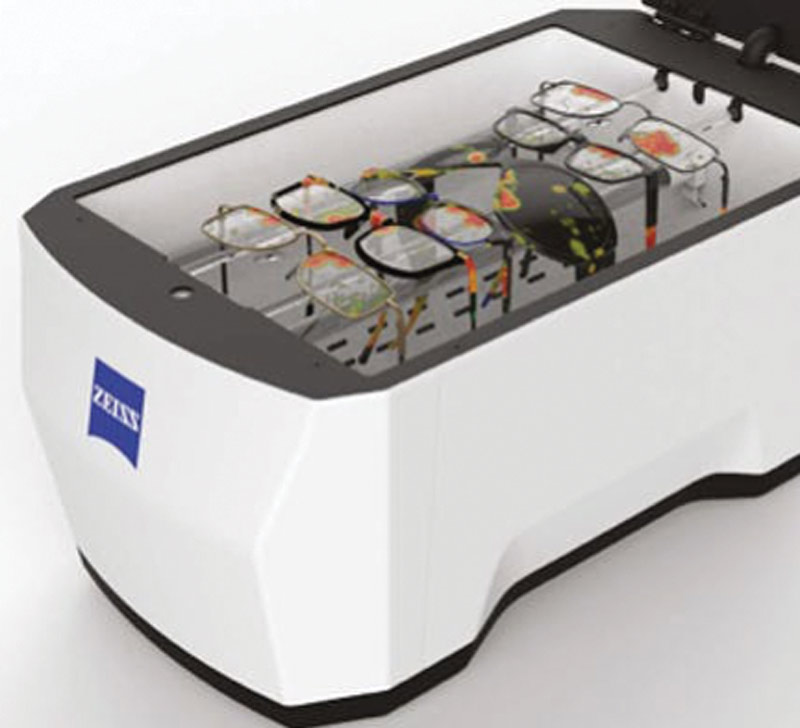
By Pro to Pro Staff
The COVID-19 pandemic has created numerous practical problems for businesses, including the need to clean and disinfect surfaces that are likely to be touched by customers and staff. The problem is even more acute for eyecare practices: In addition to all the typical touch points all businesses have, an optical dispensary has hundreds of frames that patients put on their faces. An individual patient will often try on as many as 10 to find the right one.
Given how widespread, contagious and potentially dangerous COVID-19 is today, cleaning and disinfecting frames after each try-on is absolutely essential, especially since the virus can remain viable on plastic surfaces for two to three days, and on metal for up to five days. Frame manufacturers offer guidelines for the disinfection process, which typically include donning latex gloves, carefully wiping every surface of the frame and lenses with a hydrogen peroxide wipe or solution, drying the frame, disposing of the gloves and washing hands thoroughly. When done properly, this process takes about two minutes, so one patient can create up to 20 minutes of cleaning for a staff member. Some practices have found it necessary to hire additional staff just to handle this task.
Clearly there is a need for a faster, more efficient way to ensure that frames are germ free for the next patient who tries them on. And now there is with UVClean, a new disinfecting system from ZEISS. ZEISS UVClean thoroughly and safely disinfects up to 10 frames at a time—in just 40 seconds. It does so by harnessing the beneficial qualities of vision’s traditional nemesis, UV radiation.
As you probably know, the UV spectrum is divided into three parts: UVA, UVB and UVC, which ranges from 100 to 280 nm on the electromagnetic spectrum. Like other forms of UV radiation, UVC can cause significant damage to the eyes and skin; however, solar UVC is completely absorbed by the Earth’s ozone layer. UVC in the range of 200 to 280 nm is known to be an effective disinfectant, and wavelengths between 207 and 222 nm (known as “Far UVC”) have been shown to be effective in killing pathogens while being unable to penetrate the outer layer of human skin.
The potential of UV radiation as a disinfectant has been known since the late 19th century. In 1935, William F. Wells of Harvard University showed that UVC in particular could kill airborne pathogens in a short period of time. Today, UVC is widely used as a disinfectant in applications like air and water treatment.
UVC radiation in the range described above is absorbed by the DNA, RNA and protein in pathogen cells like COVID-19. When the radiation is absorbed by the proteins, it can cause disruption of the cell walls, leading to cell death. In DNA and RNA, it causes damage that accumulates and ultimately interferes with the cell’s ability to reproduce. The ability to stop the cells from reproducing is the key to preventing infections.
For UVC to be effective against viruses and other pathogens, it must be the right wavelength, the right intensity, and it must have line-of-sight coverage of every part of the object being disinfected. UV lights available to consumers don’t deliver the quality found in lights used in medical applications: They don’t provide the necessary precision and may lack the intensity necessary to kill pathogens with complete confidence. As Dr. Jacob Scott, a research physician in the Department of Translational Hematology and Oncology Research at Cleveland Clinic, says, “Having something you think is clean, but it’s not, is worse than something that you know is dirty because it affects your behavior toward that object.”
ZEISS UVClean is a precision disinfecting device designed specifically for eyecare practices created in conjunction with Voxelight LLC. ZEISS UVClean went through a rigorous test process to ensure its effectiveness against pathogens on frames, demo lenses, Rx lenses, coatings and even frame tags. The use of four germicidal UVC bulbs ensures that there are no shadows for complete disinfection. Prior to the disinfection process, the device automatically locks to provide an extra level of user safety. ZEISS UVClean is also a “green” solution that doesn’t require the use of chemicals.
The COVID-19 pandemic is unfortunately likely to be with us for quite a while. And even after it passes, concerns about contamination and disease transmission will remain. The need for a fast, effective way to disinfect eyewear is permanent, and ZEISS UVClean can fulfill it today.












